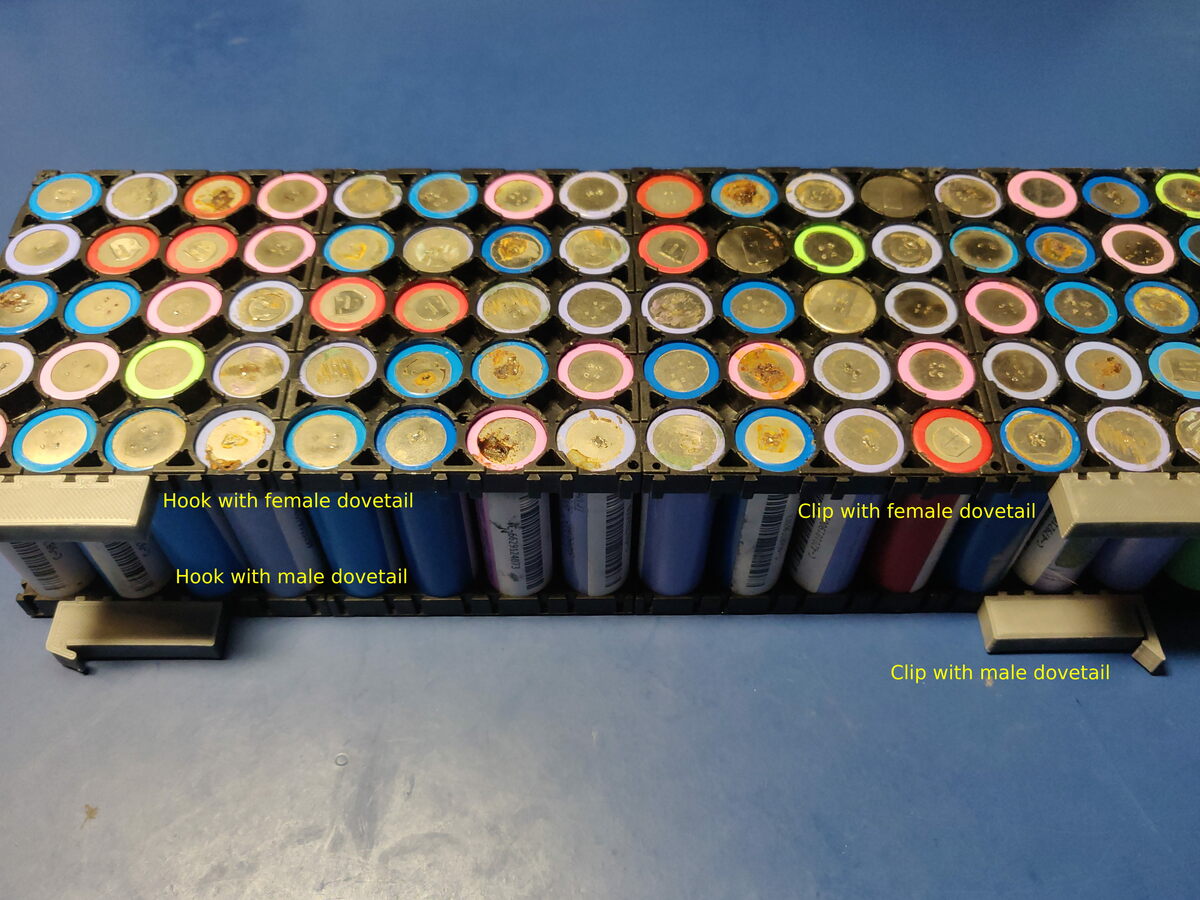Table of Contents
1 The rationale
All builders of permanent DIY power wall batteries using refurbished 18650 cells need a way to mount the power packs into a rack or onto a wall where the battery will be deployed. For battery packs using the commonly found 20.2 mm pitch cell spacers/holders people have been using any number of ad-hoc solutions amounting to putting cell "blocks" on some kind of shelf or support and letting gravity do its work (for example here or here). I have initially considered the HBPowerwall 18650 mount to mount my cells but further research has pointed me towards a better solution - using TH-35 (aka DIN rails) and mount the cell packs on them. There are numerous advantages to using DIN rails:
- they are a standard industry component which can be easily purchased instead of ordering custom-cut sheet metal like you would for the HBPowerwall mount
- they are very versatile with mounting equipment other than the packs themselves with a lot of typical electrical equipment mountable on a DIN rail
- they are easily expandable for multiple sizes or amounts of 18650 cell blocks, the HBPowerwall mount is designed for a 4x20 cell block and needs extra tricks to fit bigger blocks (like shown on this example with 10x20 blocks)
the main disadvantage of using DIN rails to mount cell blocks is that the alignment of rails needs to be precise if two rails need to support a single cell block. This will be the case for most deployments and might require some kind of base board instead of using the wall directly. Naturally, using a bent sheet metal holder which already has the proper dimensions takes care of the above for us.
While looking for existing designs for mounting 18650 cell blocks on DIN rails a number of existing solutions have been documented.
- https://www.youtube.com/watch?v=aI3y65HWzqs
- https://www.youtube.com/watch?v=Znbdh_Lq_w8
- https://www.youtube.com/watch?v=wuQiwXhlYKo
- https://www.youtube.com/watch?v=yzfTqGsklB8
- https://www.youtube.com/watch?v=kJQh48c9h5Y
After studying these solutions I have found a number of drawbacks with all of them:
- they are designed to hold relatively small cell blocks not near enough to having for example 4x20 block capacity
- many of them use a lot of filament in order to clip the cell holders from two sides and allow the block to "clip into" the holders
- some of them use the triangle-shaped cutouts in the holders which don't allow for the Batteryhookup nickel fuse roll to be used on the blocks
The above findings have prompted me to design my own system of DIN rail mounts for 18650 cell blocks with the following features in mind:
- flexibility - the mounts should allow for either small or large blocks that might need to be supported by more than one parallel DIN rail
- price - the amount of filament used should be as small as possible
- unobstructed both positive and negative sides of the cell pack in order to facilitate all ways of connecting the cells to busbars
There was an interesting discussion on the Secondlifestorage.com forums regarding the different advantages and disadvantages of the system described here.
1.1 Mounting bracket design
The mounting bracket design has been performed in FreeCAD and is based on https://www.thingiverse.com/thing:500504. It can be downloaded from Thingiverse. The basic design can be seen below:
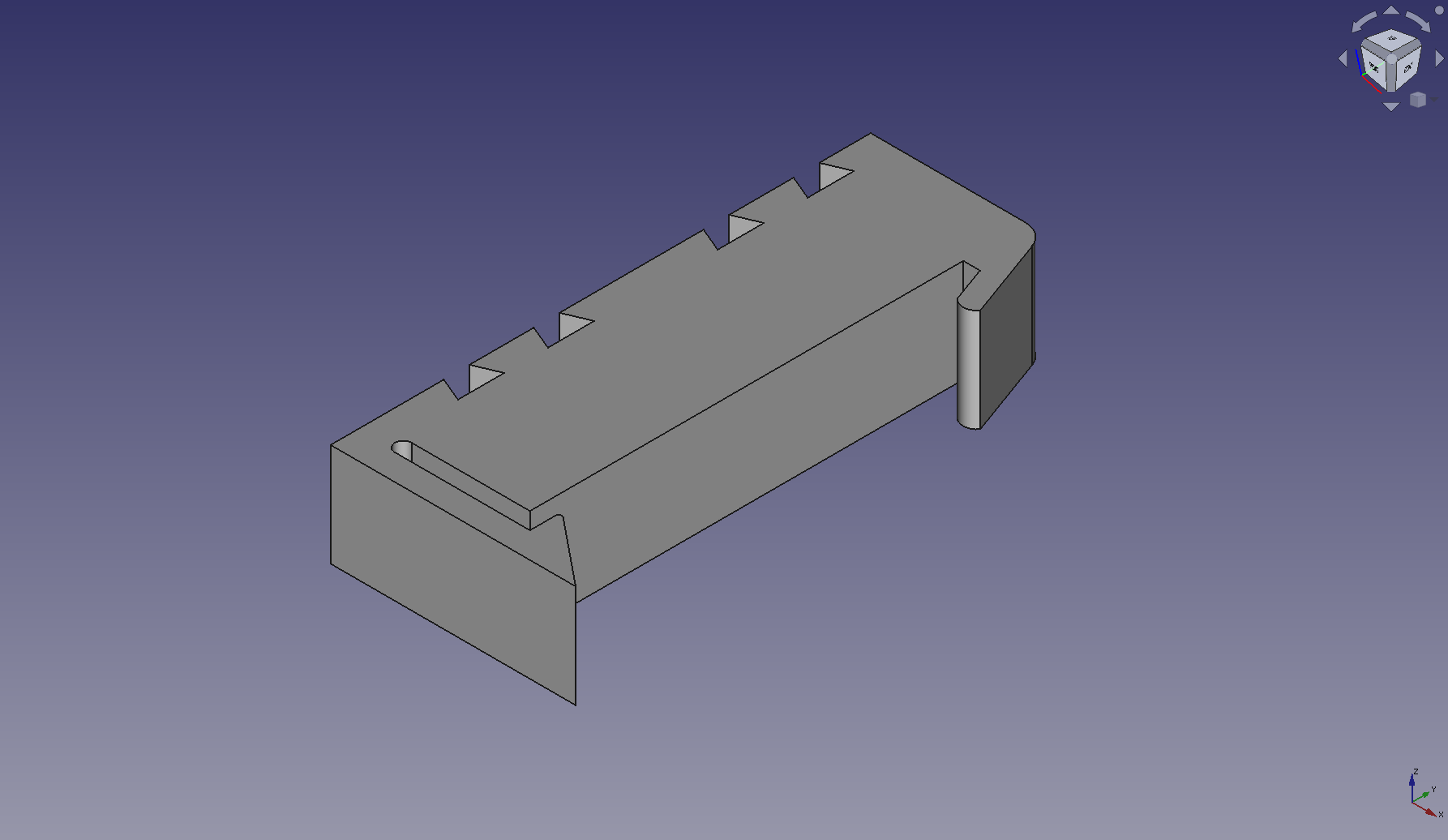
The brackets are designed to mate with the dovetails with popular 20.2 mm pitch 18650 cell spacers.
This part has variants for both male and female dovetails as well as only hook, only clip or both hook+clip variants:
| Dovetail | Variant | Bracket image |
|---|---|---|
| Male | Hook | 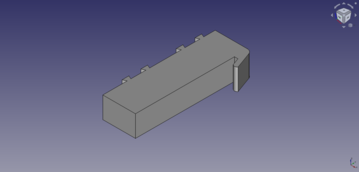 |
| Male | Clip | 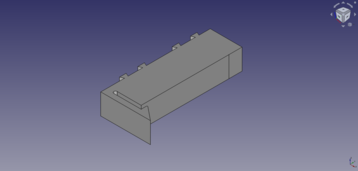 |
| Male | Hook and Clip | 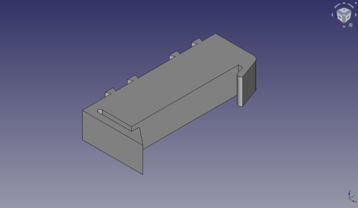 |
| Female | Hook | 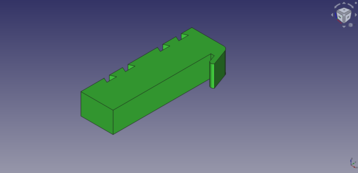 |
| Female | Clip | 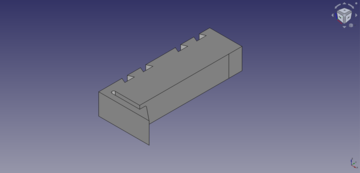 |
| Female | Hook and Clip | 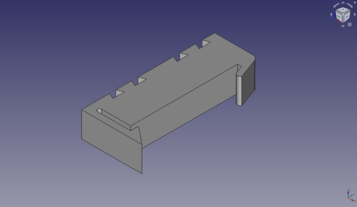 |
How do the different mounting brackets work together? In order to understand this let's look at an example 5x16 cell block. This will be mounted on two parallel horizontal DIN rails using two sets of brackets. The top set of brackets will be the Hook variant and the bottom set of brackets will use the Clip variant. This arrangement will allow for the entire block to be secured as if it was a normal DIN-rail electrical equipment. Don't worry about the corroded junk cells, these are just to simulate the shape and mass:
When you zoom in into the particular brackets you can see how the male and female dovetails mate with eachother:
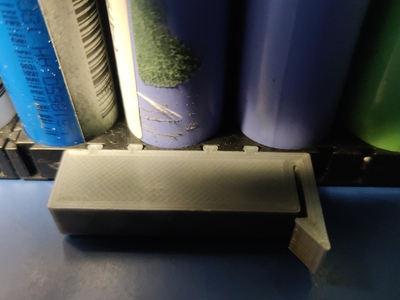 |
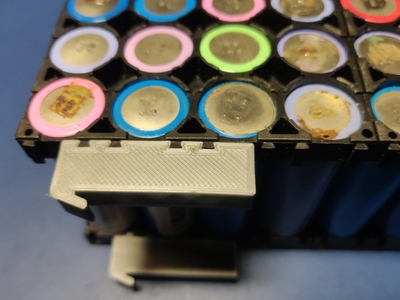 |
A video below demonstrates the brackets being attached to the two parallel DIN rails:
 Enki
Enki